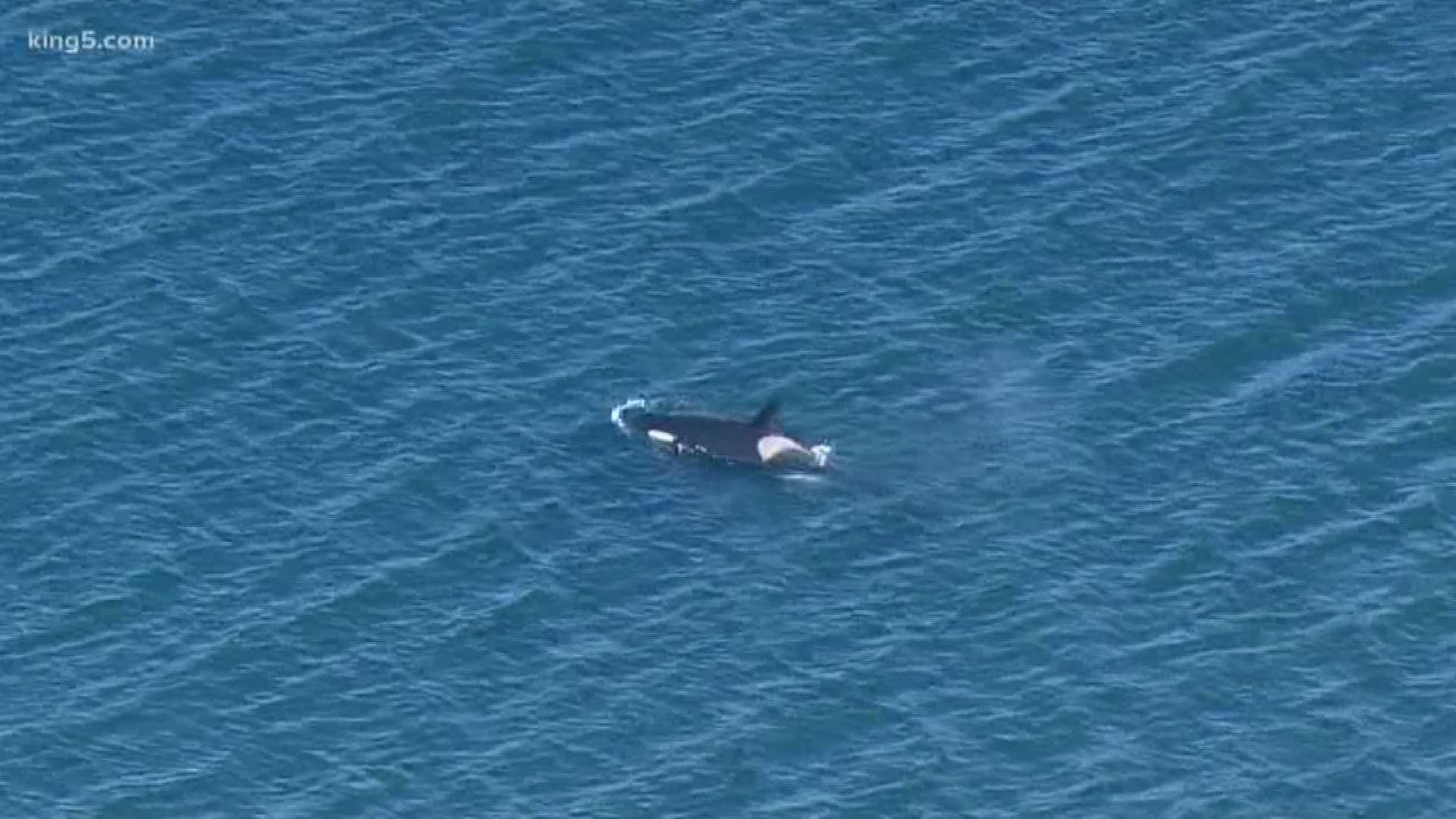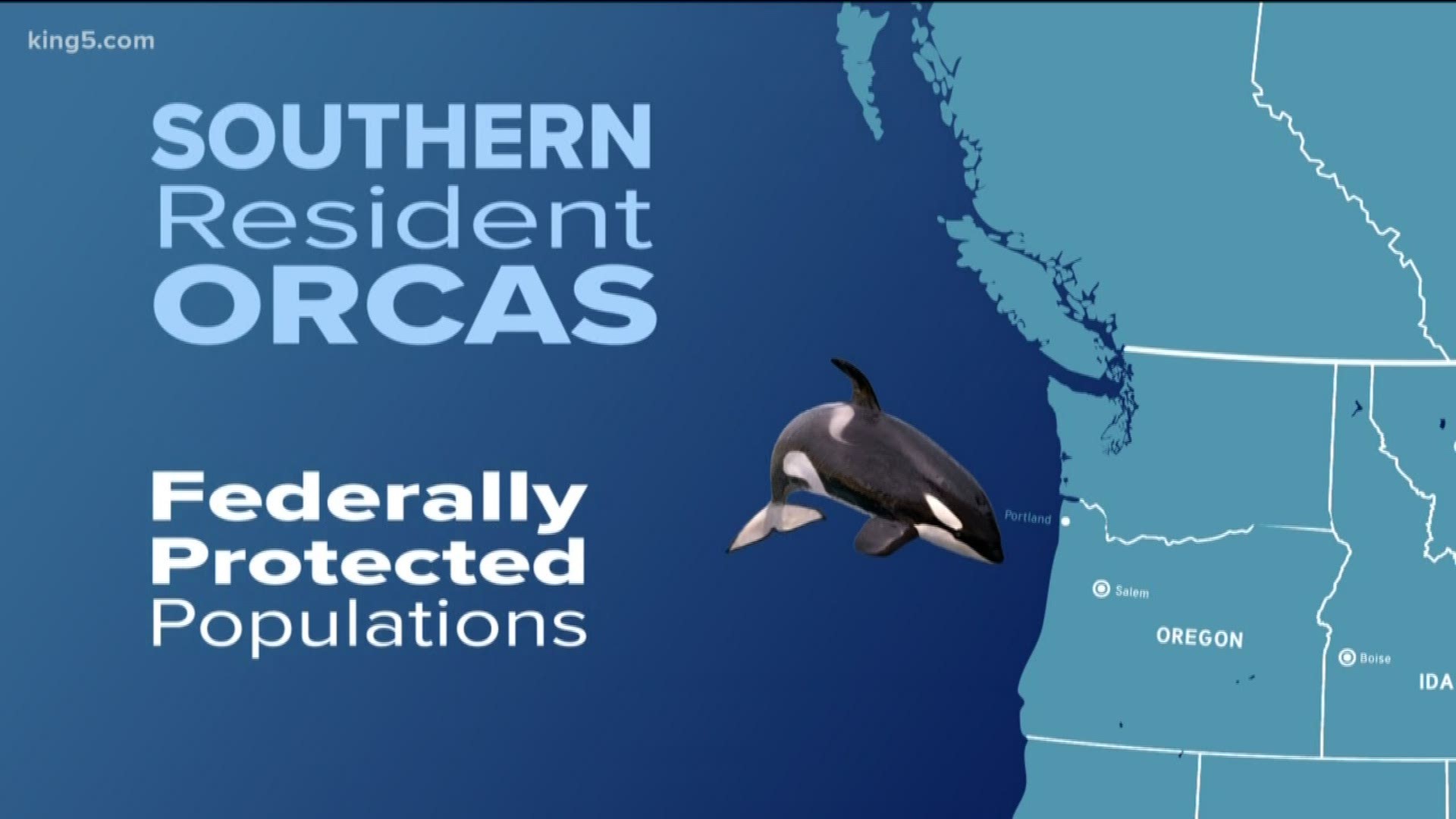Lawmakers are nearing a crucial deadline to pass several bills aimed at protecting Washington’s struggling orca population.
Four bills that are sitting in the opposite committee of the chamber in which they were introduced must make it out of committee by Wednesday to stay alive past the cutoff for non-budget bills.
The bills take aim at factors negatively impacting Southern Residents: boat noise, pollution, and dwindling prey.
"It’s become abundantly clear to everybody around the world that these whales need help," said Deborah Giles, science and research director at Wild Orca.
Most of these pieces of legislation are the outcome of Governor Jay Inslee’s orca task force, which issued recommendations to save Southern Residents last year.
Advocates argue there isn’t just one solution to saving the orcas; each bill is a critical piece of the puzzle. They also urged lawmakers to provide the funding for each bill to ensure they are carried out properly.
"We are at a critical juncture in the state legislative process," Giles said.
Under Senate Bill 5577 boats must stay at least 300 yards away from orcas instead of 200 yards under current law. It would also add a prohibition on being positioned within 400 yards behind an orca and add a speed limit of 7 knots when within half a nautical mile of an orca.
House Bill 1578 would require tug boat escorts for certain barges that haven’t required escorts in the past, because they’re smaller and have been considered less of a threat. Advocates of the bill say additional escorts would serve as a backup safety measure to prevent potential oil spills.
Another measure, House Bill 1579, hopes to boost the salmon population by allowing the state Department of Fish and Wildlife to halt hydraulic projects that could harm fish, changing the penalties for violating the hydraulic code, authorizing fishing licenses for smelt, and liberalizing catch limits for other types of fish like bass and channel catfish.
A final proposal, Senate Bill 5135, allows the state Department of Ecology to regulate some consumer products that contain certain chemicals that the department has deemed priority.
The Southern Resident population seems to be holding steady after briefly dipping to just 74 orcas last summer, the lowest it’s been in over 30 years. One of the reasons is a low number of orca births. Giles cited a multi-year study that found nearly 70 percent of all Southern Resident pregnancies are lost before the calf is born.
One bright spot for Southern Residents was the birth of a new calf, who was identified as L124 in January. L124 was recently spotted for the first time in months off the coast of central California. Researchers say it appeared to be healthy and kept up with the group.
However, there are still concerns with several orcas who appear to be in poor health: 42-year-old J17 has peanuthead, which is a depression at the base of the neck and a sign of malnutrition and fat loss. Although reports from the end of March found J17’s condition appeared to have improved over the last few months, researchers said they “remain cautiously optimistic.”
Twenty-eight-year-old K25 also appeared to be losing weight in the fall, although sightings in January indicated his condition didn’t appear to have worsened.


